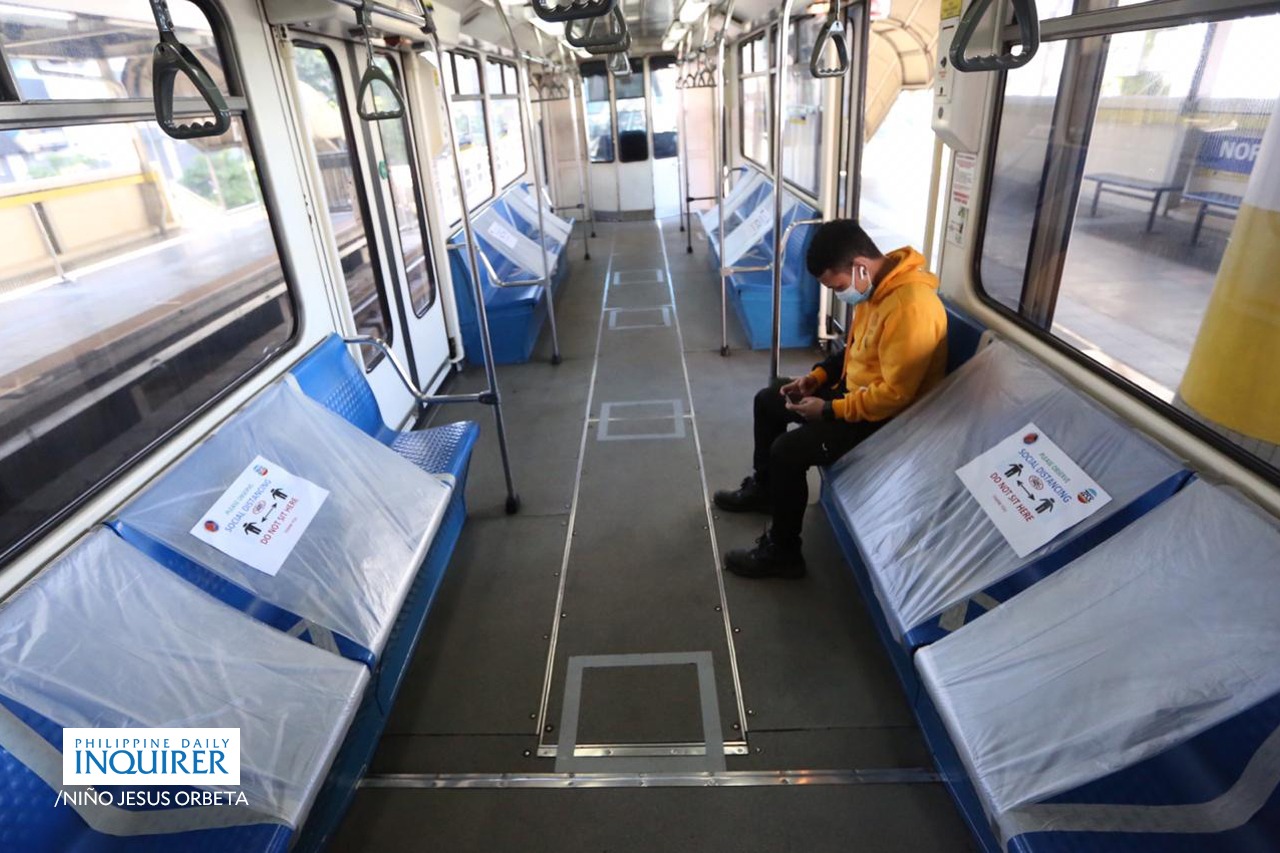
Plastic sheets are used as dividers to maintain a one- meter distance between passengers of the the MRT-3 starting Monday, June 1, as Metro Manila enters the general community quarantine period. Niño Jesus Orbeta/Philippine Daily Inquirer
MANILA, Philippines — A total of 19 trains will operate on the Metro Rail Transit Line 3 (MRT-3) starting Monday, June 1 to serve passengers as quarantine protocols are eased in Metro Manila, the Department of Transportation reported Sunday.
Transportation Secretary Arthur Tugade said the trains to be deployed is an increase from the 15 train sets operating along the line before Metro Manila was placed under an enhanced community quarantine (ECQ) as a part of government measures in response to the coronavirus crisis.
“Ang gagamitin na tren sa Lunes ay hindi na 14 o 15. Ang gagamitin ay 19 na tren. Sa ganitong pamamaraan, madadagdagan ang biyahe at madadagdagan ang mga mananakay bagamat limited capacity,” Tugade said in a statement.
Further, Tugade said the operating speed of the trains will also increase from 30 kilometers per hour (kph) to 40 kph at certain sections of the MRT-3 mainline—particularly between North Avenue and Santolan Stations, and between Buendia and Taft Stations—starting Monday.
“Sa dahilan na nagawa na po natin ang ilan sa mga rail replacement project, mai-experience n’yo na po ang takbo ng ating mga tren sa ilang bahagi ng linya na nasa 40kph, mula sa dating 25 to 30kph,” Secretary Tugade said.
MRT-3 Director for Operation Michael Capati, meanwhile, said the developments will aid the expected reduction of the MRT-3 line’s capacity.
“Having more trains, a faster operating speed, and lower headway are intended to contribute in mitigating the reduction in the capacity of MRT-3, which will only be able to accommodate 153 passengers per train set, or 13% of its pre-ECQ capacity of 1,182 passengers per train set, due to implementation of 1-meter social distancing inside trains,” Capati said.
As a part of quarantine protocols, physical distancing markers were placed inside the trains to ensure that passengers are observing the one-meter physical distancing requirement of the government.
In areas placed under GCQ, the road, rail, maritime, and aviation sectors of public transportation shall operate at a reduced operational and vehicle capacity, given that minimum health standards are observed.